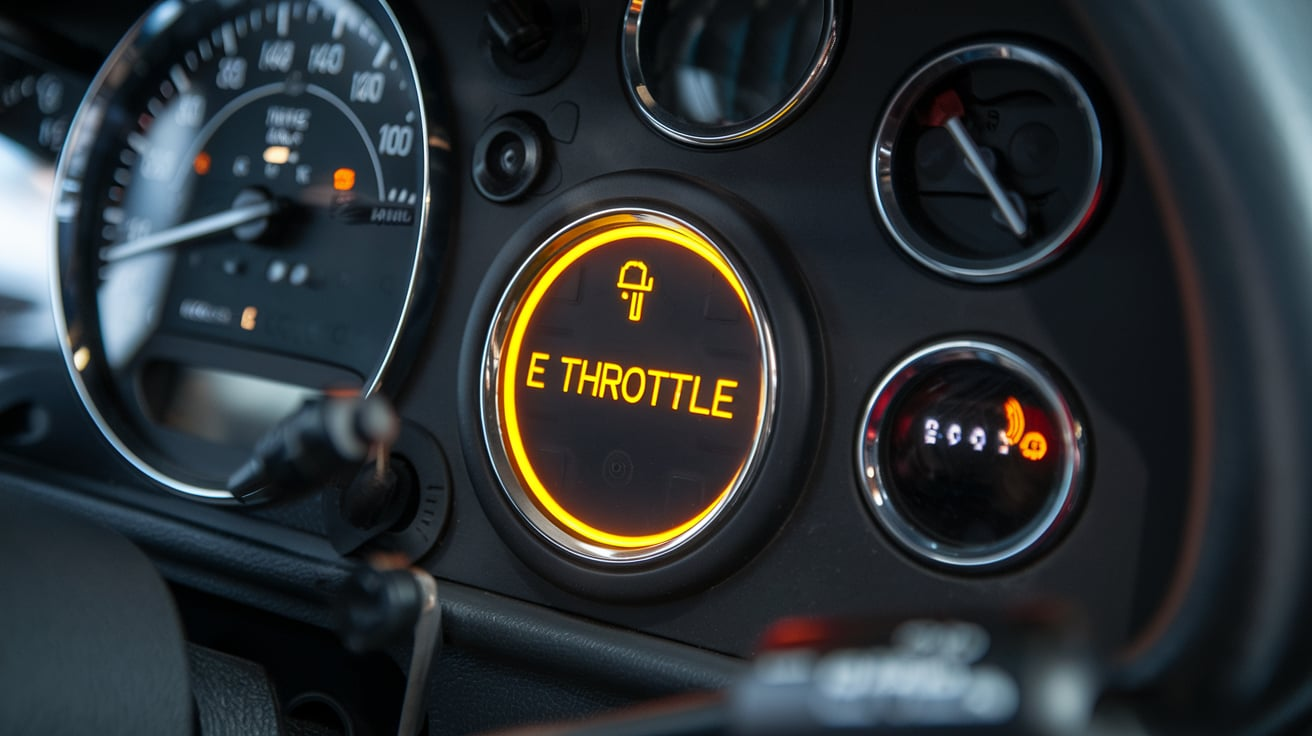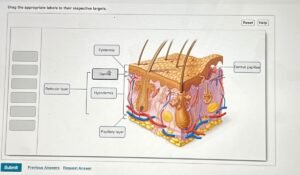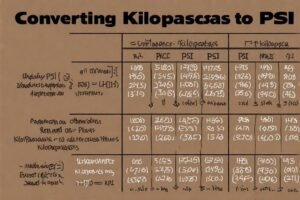
The electronic throttle control light is an important indicator on your vehicle’s dashboard. While it may seem like a small light, it signals a potentially serious issue that requires immediate attention. In this article, we will dive deep into what the electronic throttle control light means, why it appears, and what actions you can take to fix the underlying problems. We’ll cover common causes, signs, and solutions to help you keep your vehicle in good condition and avoid costly repairs.
Table of Contents
What is the Electronic Throttle Control?
The electronic throttle control (ETC) system plays a vital role in how your vehicle operates. Unlike older vehicles that rely on a mechanical throttle body, modern vehicles use an electronic throttle control system. This system connects the accelerator pedal to the engine’s throttle using sensors and an electronic control module (ECM).
When you press the accelerator, the pedal sends a signal to the throttle body, which adjusts the engine’s airflow accordingly. The electronic throttle control light appears when the system detects a malfunction or a fault in the communication between the components. This light serves as an alert to warn you that the throttle system may not be working properly.
The Role of the Electronic Throttle Control Light
The electronic throttle control light is an indicator of a problem with the throttle control system in your vehicle. When the system detects an issue, the light will typically illuminate on your dashboard. This could mean various things, ranging from minor issues like dirty sensors to more serious problems such as faulty throttle bodies or damaged wiring.
When the light comes on, your vehicle may experience reduced performance, such as unresponsive acceleration, erratic idling, or difficulty reaching higher speeds. In some cases, the car may go into “limp mode,” which restricts its speed and performance to prevent further damage.
What Triggers the Electronic Throttle Control Light?
Several issues can trigger the electronic throttle control light to come on. Some of the most common causes include:
- Dirty or Faulty Throttle Body: Over time, dirt and debris can accumulate on the throttle body, affecting its ability to regulate airflow to the engine. A dirty throttle body may trigger the electronic throttle control light.
- Faulty Throttle Position Sensor: The throttle position sensor (TPS) monitors the position of the throttle valve. If the sensor fails or becomes misaligned, it can cause the ETC system to malfunction and trigger the warning light.
- Wiring Issues: Damaged or corroded wiring between the accelerator pedal and the throttle body can cause intermittent connections, which may trigger the electronic throttle control light.
- Malfunctioning Electronic Control Module (ECM): The ECM controls the throttle system, and if it malfunctions, it can send incorrect signals to other components, resulting in the electronic throttle control light coming on.
- Vacuum Leaks: The throttle system depends on vacuum pressure to operate correctly. Any vacuum leaks can affect the throttle response and lead to the electronic throttle control light being illuminated.
- Accelerator Pedal Sensor Failure: The sensor that monitors the position of the accelerator pedal can fail, sending incorrect data to the ETC system and causing the warning light to turn on.
Signs Your Electronic Throttle Control System is Failing
When the electronic throttle control system starts to fail, it can show several symptoms. These symptoms can range from minor to severe and should be addressed as soon as possible to avoid further damage. Some common signs include:
- Erratic or Unresponsive Acceleration: If your car hesitates to accelerate when you press the pedal, or if the response is erratic, it could be a sign of an issue with the ETC system.
- Limp Mode: When the vehicle enters limp mode, it restricts the engine’s power and performance to prevent further damage. This is often triggered by a malfunction in the throttle control system.
- Rough Idling: If your car is idling roughly, fluctuating in speed, or stalling, it may indicate a problem with the throttle body or throttle position sensor.
- Poor Engine Performance: A malfunctioning ETC system can result in poor engine performance, including difficulty accelerating or maintaining a constant speed.
- Dashboard Warning Light: The most obvious sign of a problem is the illumination of the electronic throttle control light on your dashboard.
How to Fix the Electronic Throttle Control Light Issue
If your electronic throttle control light comes on, it’s important to address the issue promptly.
- Check for Loose or Damaged Wiring: Inspect the wiring connected to the throttle body, accelerator pedal, and related components.
- Clean the Throttle Body: Over time, the throttle body can accumulate dirt, dust, and carbon deposits. Cleaning the throttle body can restore proper airflow and improve throttle response.
- Replace Faulty Sensors: If the throttle position sensor or accelerator pedal sensor is malfunctioning, they may need to be replaced. These sensors play a crucial role in the operation of the ETC system.
- Check for Vacuum Leaks: Repairing any leaks can restore proper system pressure and eliminate the issues triggering the warning light.
- Reset the ECU: In some cases, resetting the vehicle’s engine control unit (ECU) can resolve minor faults and clear the warning light.
- Seek Professional Help: If the problem persists or if you’re unable to identify the cause of the issue, it’s best to take your vehicle to a mechanic.
Importance of Addressing the Electronic Throttle Control Light
Ignoring the electronic throttle control light can lead to more severe issues down the road. A malfunctioning ETC system can affect your car’s performance and fuel efficiency, leading to higher repair costs and unsafe driving conditions.
Can You Drive with the Electronic Throttle Control Light On?
While it’s possible to drive your vehicle with the electronic throttle control light on, it is not recommended. Driving with this warning light illuminated may cause your vehicle to enter limp mode, reducing engine power and limiting your speed. This can make it difficult to drive safely, especially in situations that require quick acceleration, such as merging onto highways or passing other vehicles.
In some cases, ignoring the light can damage the throttle system or other engine components. To prevent further complications, it’s always best to have the issue diagnosed and repaired as soon as possible.
Prevention Tips for the Electronic Throttle Control System
While some issues may be unavoidable, there are several preventative measures you can take to reduce the likelihood of encountering problems with your electronic throttle control system:
- Regular Maintenance: Regularly cleaning and inspecting the throttle body, sensors, and wiring can help prevent dirt buildup and ensure everything is functioning properly.
- Timely Repairs: Address any issues promptly, even if they seem minor. Fixing small problems before they escalate can save you time and money in the long run.
- Monitor Warning Lights: Pay attention to any warning lights that appear on your dashboard, including the electronic throttle control light. Promptly diagnosing and fixing the problem can prevent further damage.
Conclusion
The electronic throttle control light is a crucial indicator of your vehicle’s health. When illuminated, it signals a problem with the throttle control system that should not be ignored. Understanding the common causes, symptoms, and solutions for the electronic throttle control light can help you address the issue quickly and keep your vehicle running at its best. Regular maintenance and timely repairs are essential in ensuring the longevity of your car’s electronic throttle control system.
FAQs
1. Decoding the Electronic Throttle Control Light, What You Should Know?
The electronic throttle control light indicates a malfunction in the throttle control system, which could involve issues with the throttle body, sensors, wiring, or other components.
2. Can I drive with the electronic throttle control light on?
It is advisable to avoid driving with the light on, as this may pose a risk to safe vehicle operation. The vehicle may enter limp mode, reducing its power and performance and making it unsafe.
3. How do I fix the electronic throttle control light?
Fixing the issue may involve cleaning the throttle body, replacing faulty sensors, repairing damaged wiring, or addressing vacuum leaks.
4. What causes the electronic throttle control light to come on?
Common causes include a dirty throttle body, faulty throttle position sensor, wiring issues, malfunctioning ECM, or vacuum leaks.
5. Is it safe to ignore the electronic throttle control light?
No, ignoring the electronic throttle control light can lead to more severe problems and higher repair costs.







